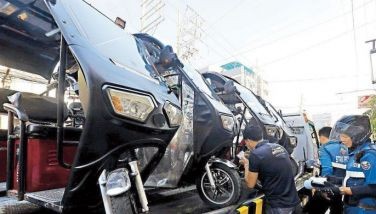'What happened at Bohol?': 7 questions on the deadly quake
The Philippine Institute of Volcanology and Seismology's primer on the recent earthquake that originated from the East Bohol Fault:
What happened at Bohol?
At 8:12 AM on 15 October 2013, Tuesday, a destructive earthquake of magnitude 7.2 shook the island of Bohol and nearby provinces. Smaller-magnitude earthquakes followed afterwards, and as of 1:00 pm, 16 October 2013, 885 earthquakes have been recorded by the PHIVOLCS seismic monitoring network. At least 15 events were reportedly felt in the epicentral area. The main shock and succeeding aftershocks were located in the vicinity of Bohol. These recorded events were shallow, with a depth of at most 32 kilometers. Based on spatial distribution of succeeding events and characteristics of the earthquake, the event is tectonic in origin.
Related: Bohol quake among the deadliest in Philippine history
Based on preliminary intensity reports, the strongest ground shaking at PEIS VII was felt at Tagbilaran City and several cities in the province of Cebu. Neighboring island provinces of Cebu, Negros Occidental, Negros Oriental, Camiguin, Panay, Leyte, and several areas in northeastern Mindanao felt the earthquake at varying intensities of PEIS I-VI.
Moderate-magnitude (M5 to 6.9) earthquakes have also affected Bohol Island in the past!
On 08 February 1990, a magnitude 6.8 earthquake occurred at Bohol generated by an offshore reverse fault east of the island. Sixteen municipalities felt the strongest intensity of ground shaking at PEIS VIII. There were reports of severe property damages, numerous casualties, hundreds injured, and several thousands homeless. The towns of Jagna, Duero, Guindulman, Garcia Hernandez, and Valencia experienced tsunami inundation.
Why do earthquakes occur in Bohol?
Bohol Island is one of the seismically active areas in the country. Instrumental monitoring of earthquakes for the past century has detected many small to moderate-magnitude earthquakes in Bohol Island. There is at least one known earthquake generator on the island, the East Bohol Fault. In addition, there are other local faults which can be sources of small to large magnitude earthquakes. Earthquakes can also occur offshore or undersea because of local offshore faults near the island or trenches in the vicinity of the region.
Can these present earthquakes indicate volcanic activity?
No. There are no volcanoes in Bohol Island.
What can we expect from the current earthquake activity?
The current seismic trend indicates that the magnitude 7.2 earthquake on 15 October 2013 is the main shock, and the succeeding small magnitude earthquakes are the aftershocks. Aftershocks are expected, some of which will be felt. These may continue for weeks to months, but diminishing in number and strength as time passes. In this case, a higher magnitude earthquake related to this event is no longer expected to occur.
What can we expect after a large-magnitude/high-intensity earthquake like this?
People are reminded to be cautious of structures visibly weakened or with signs of damage by the 15 October 2013 earthquake, as these may be further damaged by succeeding earthquakes. Strong ground shaking may cause extensive damage to or even the collapse of houses, buildings, bridges, and other infrastructures. Collapsed structures usually account for most of the casualties during a strong earthquake. Falling objects may also cause injuries.
What should we do?
Report from the field mentioned several building, houses and other infrastructures that sustained minor to major damages. In case of houses with visible damage, it is best to contact the Municipal Engineering Office for advice. Engineers from the municipal government and other authorities should inspect buildings and other infrastructures to determine their integrity and recommend appropriate action to concerned affected groups or individuals. Check for tension cracks on the ground that may have resulted by the strong ground shaking. These areas can initiate landslides during intense rainfall.
The best course of action is preparedness. In case of another felt earthquake, it is recommended that people protect themselves by doing the “duck, cover and holdâ€. In homes and offices, heavy furniture should be strapped to the walls and appliances be secured to prevent them from toppling and causing injuries injury to persons.
Aside from strong ground shaking, what other seismic hazards are life-threatening?
Landslides, rock falls, and other types of mass movement may occur in mountainous or hilly areas. Liquefaction, manifested by sandboils or lateral spreading may affect low-lying, water-saturated, sandy areas near the coast or at the banks of rivers. In general, since the destructive earthquake occurred inland, no tsunami was generated.
- Latest
- Trending


























